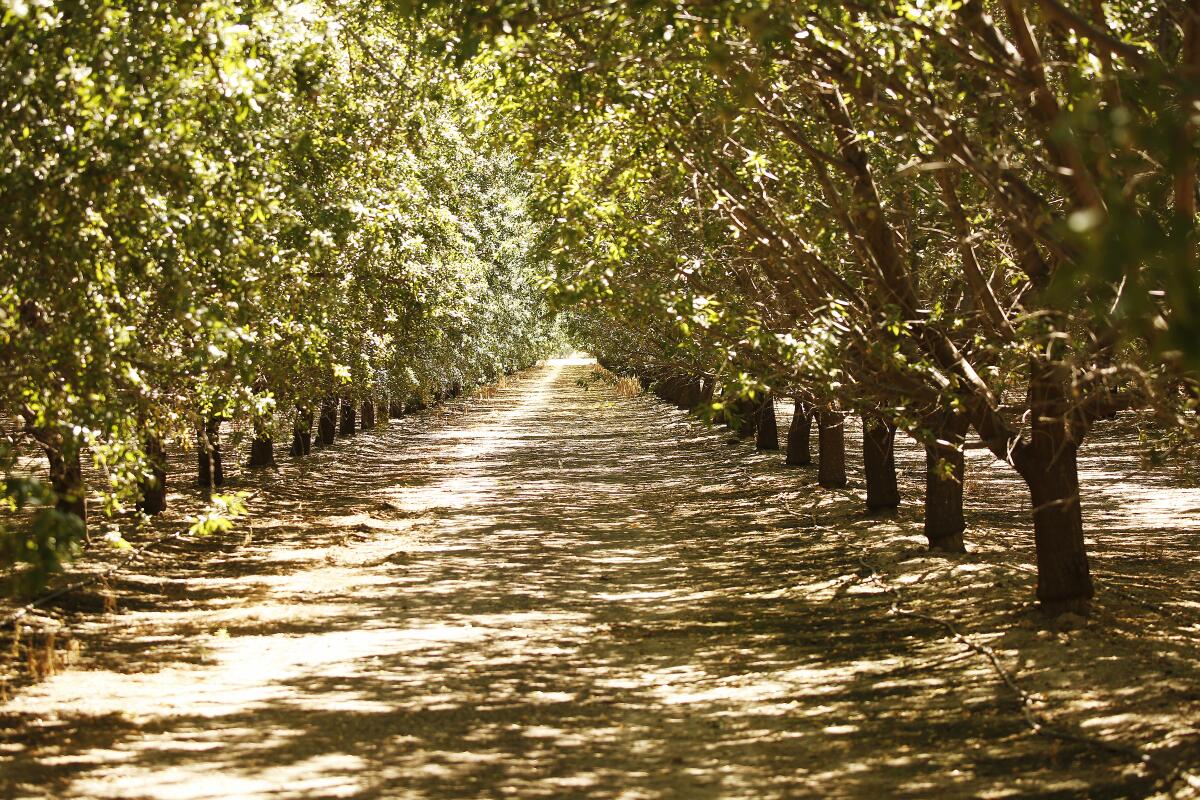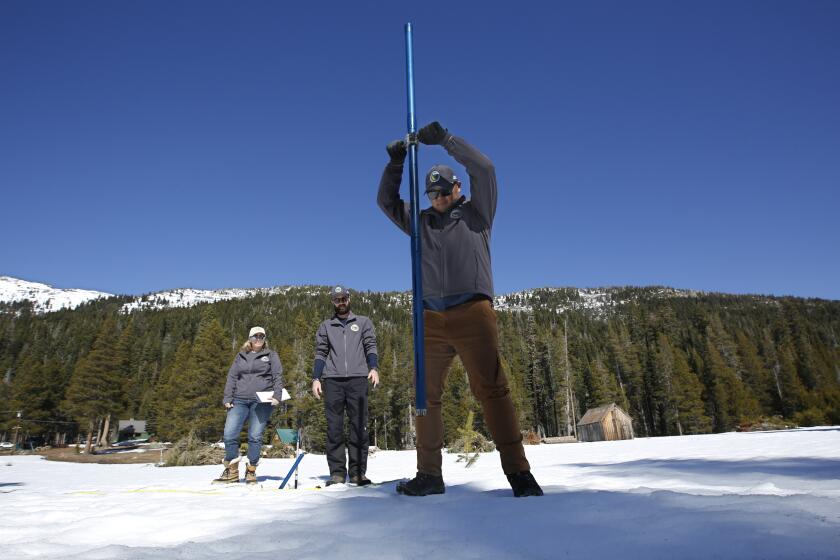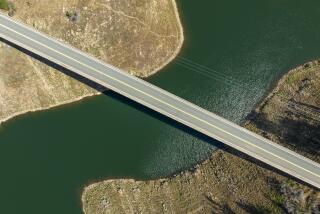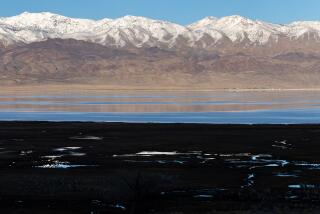Op-Ed: Yes, California is in a drought — even if officials aren’t saying it out loud

California is suffering from severe drought again. This winter produced water conditions far below normal for the second year in a row, the eighth year in the last 10, the 14th year in the last 20. Los Angeles has had 39% of normal precipitation; San Diego, only 30%; San Francisco, 37%; Sacramento, less than 40%.
The snowpack is meager — less than half of normal — and falling fast as spring temperatures warm up. The state’s largest reservoirs are hovering around 50% to 60% of their normal capacity, or less, for this time of year, almost exactly where they were when Gov. Jerry Brown declared a drought emergency in January 2014.
The California Department of Water Resources announced that it expected to deliver only 5% of requested supplies to municipal and agricultural users on the State Water Project, down from the initial allocation of 10% announced in December. Allocations of water from the federal Central Valley Project are just as low. Major reservoirs on the Colorado River have fallen to critically low levels.
And all of this is on top of last year’s severe dry weather that contributed to a brutal fire season, with more than 4.2 million acres burned and at least $10 billion in property destroyed. These challenges are a result of California’s vulnerability to natural extremes of weather and the growing consequences of human-caused climate change.
But so far in 2021 our officials have been strangely silent.
Gov. Gavin Newsom has not declared a statewide drought emergency, and his website says nothing about drought. The Metropolitan Water District of Southern California, which sells water to 26 agencies serving over 18 million people, has a small note on its webpage saying customers can keep doing what they’ve been doing, rather than exhorting them to save water and providing information about how to do so. There is nothing warning of the drought on websites of other major water providers, including the Los Angeles Department of Water and Power, the East Bay Municipal Utility District or the San Francisco Public Utilities Commission.
Longtime California residents understand drought. The state has increasingly suffered severe droughts in the last few decades because of the effects of climate change. When asked to take action, Californians step up. During the last severe drought, Gov. Brown asked urban residents to cut their water use by 20% and then, as the drought worsened, by 25%.
And we did, for the most part, as information was provided by water agencies and the media on how to save water; rebates were offered for more efficient toilets, showerheads and appliances; and programs to eliminate lawns and cut outdoor watering were rolled out. Most water agencies reported declines in water use in line with the emergency request.
The good news is that, while water use has risen slightly since that drought, many of the savings achieved have persisted, both because of permanent removal of lawns and inefficient appliances and because of changes in behavior. It’s even better news that there is more that can and should be done in the face of this new drought.
Record amounts of regional water storage will buffer urban Southern California from the effects of drought this year.
New programs should be launched immediately that offer financial incentives to replace water-guzzling lawns with drought-resistant, low-water gardens; find and fix leaks; and swap out old washing machines, dishwashers and toilets with modern, water-efficient models. Public service announcements encouraging changes in behavior such as reminding people to take shorter showers and cut down on hand-watering of gardens and car washing can lead to temporary decreases in water usage.
Simply put, every gallon of water saved now is a gallon of water that can stay in our rivers and streams to support severely stressed fisheries and ecosystems, or remain stored in our reservoirs for later use if the drought continues. And every gallon saved is a gallon we don’t have to pay for in our water bills.
The drought is also a reminder that the vast majority of water consumed in California goes to the agricultural sector. Growers have their own severe challenges, including complicated and contentious fights over water rights and allocations, massive groundwater overdraft and damaging land subsidence, and the shift in recent years to more and more acres of thirsty, permanent crops such as almonds and pistachios that must be watered every year no matter what.
The amount of land with water-hungry crops that has been brought into production is far greater than what can be irrigated with reliable available water. Therefore the agricultural sector must plan for cutting back water use during drought and where groundwater has been subject to severe overdraft. And though more farmers are shifting to water-efficient irrigation technology such as precision drip and real-time soil moisture monitoring, greater efforts are needed to grow more food with less water.
It’s time for our water agencies and our political leaders step up, acknowledge the severity of the problem and offer solutions that will continue to push California on the path to more efficient water use in the face of shortages that are not going away.
Peter Gleick is a hydrologist, climatologist and MacArthur fellow. He co-founded the Pacific Institute in Oakland and is a member of the National Academy of Sciences.
More to Read
A cure for the common opinion
Get thought-provoking perspectives with our weekly newsletter.
You may occasionally receive promotional content from the Los Angeles Times.











